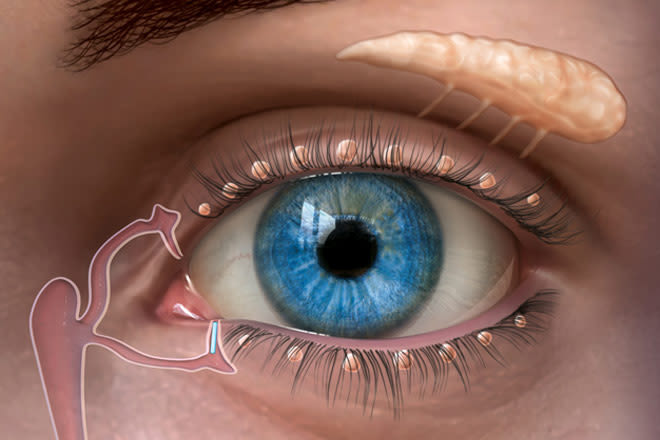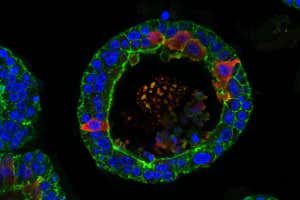Lab grown human tear glands actually cry sounds like a sci-fi movie!
Yet, “Scientists have an ambitious vision for their organoid.“

The following written content by Leslie Katz
Disembodied human tear glands that cry sound like something out of a sci-fi movie. But in the Netherlands, functional tear glands that don’t attach to anyone’s eyes (or emotions) are starring in their own real-life drama.
Researchers from the Hubrecht Institute and UMC Utrecht have used stem cells to grow tiny tear glands in a petri dish, mimicking the real thing. They hope these so-called organoids can serve as models for studying how the cells in human tear glands produce tears. The ultimate goal: to better understand and treat conditions such as dry eye disease or the autoimmune disorder Sjögren’s syndrome, as well as cancers of the tear gland.
“Hopefully in the future, this type of organoid may even be transplantable to patients with nonfunctioning tear glands,” says Marie Bannier-Hélaouët, a doctoral candidate at the Hubrecht Institute for developmental biology and stem cell research. She co-authored a study published Tuesday in the journal Cell Stem Cell that details the project.

Organoids are built in vitro, in 3D suspension, from a small number of stem cells that eventually multiply to form something resembling a real organ, such as a mini-brain, bladder, or, in this case, the glands located inside the upper eyelid.
Tear, or lacrimal, glands continuously supply fluid that’s wiped across the surface of the eye every time we blink and then drains into small holes in the corners of our upper and lower lids before traveling down our tear ducts to the nose. In addition to displaying emotion, the fluid is essential to the eye’s health, lubricating the cornea and helping ward off bacteria. Tear gland dysfunction can be annoying, causing scratching, stinging or burning sensations and sensitivity to light. But it can also be serious, leading to corneal abrasions or ulcerations or even blindness in the most severe cases.
Tear glands are made up of several kinds of cells. The lab-grown glands out of the Netherlands are made up of just one type, ductal, and cry in response to chemical stimuli such as noradrenaline, a neurotransmitter that sends a message from our neurons to our tear glands. Read more from Cnet.





